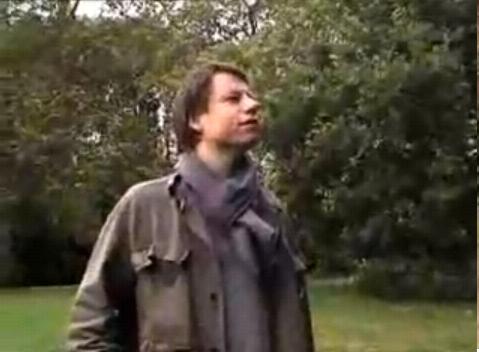 |
| Yarrow |
The 60-70.000 year old Neanderthal flower burial known as
Shanidar IV may be a case of mistaking two archaeological layers as one (the flowers unrelated to the Neanderthal remains), but what a joy to read Jan Lietav's 1991 article '
Medicinal plants in a Middle Paleolithic grave Shanidar IV?' in which the 'objective healing activity' of the six flowers found at the site are evaluated as substantial evidence that the flowers are not 'random'. Here are the six plants with some random bits from the article, from Wikipedia and from
Sturtevant's Edible Plants of the World:
"...already mentioned by Homer and Plinius as being useful for wounds and Anglo-Saxons used yarrow as a panacea." Yarrow connects Greek and Chinese myth (Achilles and the I Ching) with Anglo-Saxon medicine with a plant growing along every motorway in almost every part of the world.
Sturtevant: "Europe, Asia and America. In some parts of Sweden, yarrow is said to be employed as a substitute for hops in the preparation of beer, to which it is supposed to add an intoxicating effect."
"employed for centuries in folk medicine. Plinius mentioned that Cheiron, the centaur, had used it to cure himself." The Wikipedia-entry is US-centric and deal almost exclusively with its invasiveness. Botanical.com
writes: "in agriculture the Thistle is the recognized sign of
untidiness and neglect, being found not so much in barren ground, as in
good ground not properly cared for."
Sturtevant:"Europe, north Africa and temperate Asia. The young according to Forskal, are eaten raw in Egypt."
"The genus Senecio covers several hundred species. Historically, its earliest use has been evidenced in old Anglo-Saxon chronicles where its name was
groundsels." It
was used for gout, dressing wounds, and stomach sickness.
Sturtevant:"In Thibet, this plant serves and slightly acid liquor."
"We need more time to evaluate the objective value of this research properly." There are some online references to herbal uses of this plant but not very specific. Not the strongest case.
Sturtevant: "Mediterranean and Caucasian region. The bulbs are eaten in Crete, Zacynthus and Corcyra, as well as in Italy, according, to Sprengel."
"...believed to have been used under the name ma-huang by the mythical Chinese emperor Shen-Nung in the third millenium B.C." Our deceased Neanderthal friend wouldn't have passed a drug test with all that
Ephedra.
Sturtevant: "China and south Russia. The fruit is eaten by the Russian peasants and by the wandering hordes of Great Tartary. The fruit is eaten by the Chinese and is mucilaginous, with a slightly acid or pungent flavor. The fruit is ovoid, succulent, sweet, pale or bright red when ripe. It is eaten in some places, as on the Sutlej." (The Ephedra found at Shanidar is probably another plant from the genus.)
"... a highly appreciated plant in both traditional and official medicine since Hippocrates’ times, and it has kept its position to this day. At present, Althea of’- cidis is noted in pharmacopoeias of 26 countries." The root has been used since Egyptian antiquity in a honey-sweetened confection useful in the treatment of sore throat.
Sturtevant: "The plant is found wild in Europe and Asia and is naturalized in places in America. It is cultivated extensively in Europe for medicinal purposes, acting as a demulcent. In 812, Charlemagne enjoined its culture in France. Johnson says its leaves may be eaten when boiled."
So: Yarrow and Ephedra have an extremely well-established, medicinal history of use; Muscari is a unconvincing example; Althea, Senecio and Yellow Star Thistle were used extensively in the past but less obvious so today. Personally I just like the idea that a weedy plant was already used by a Neanderthal 60.000 years ago, it adds history to common plants growing in every street and park. What is interesting is that Neanderthal studies have made a giant leap in recent years and the old brute is becoming ever more human which makes the idea of ceremonial burial by the Neanderthal more likely. We also now have a
good idea
what they
were eating and cooking.
(The Lietav article kindly provided from behind the behind the great academic firewall by a reader).
(This post rambles what else do you expect? I was looking into this because I wanted to verify Wikipedia's claim that the hollyhock was also found in Shanidar, but from Wikipedia itself I learned that the some plants classed as Alcea (hollyhock) are now part of the Althea family.)


















